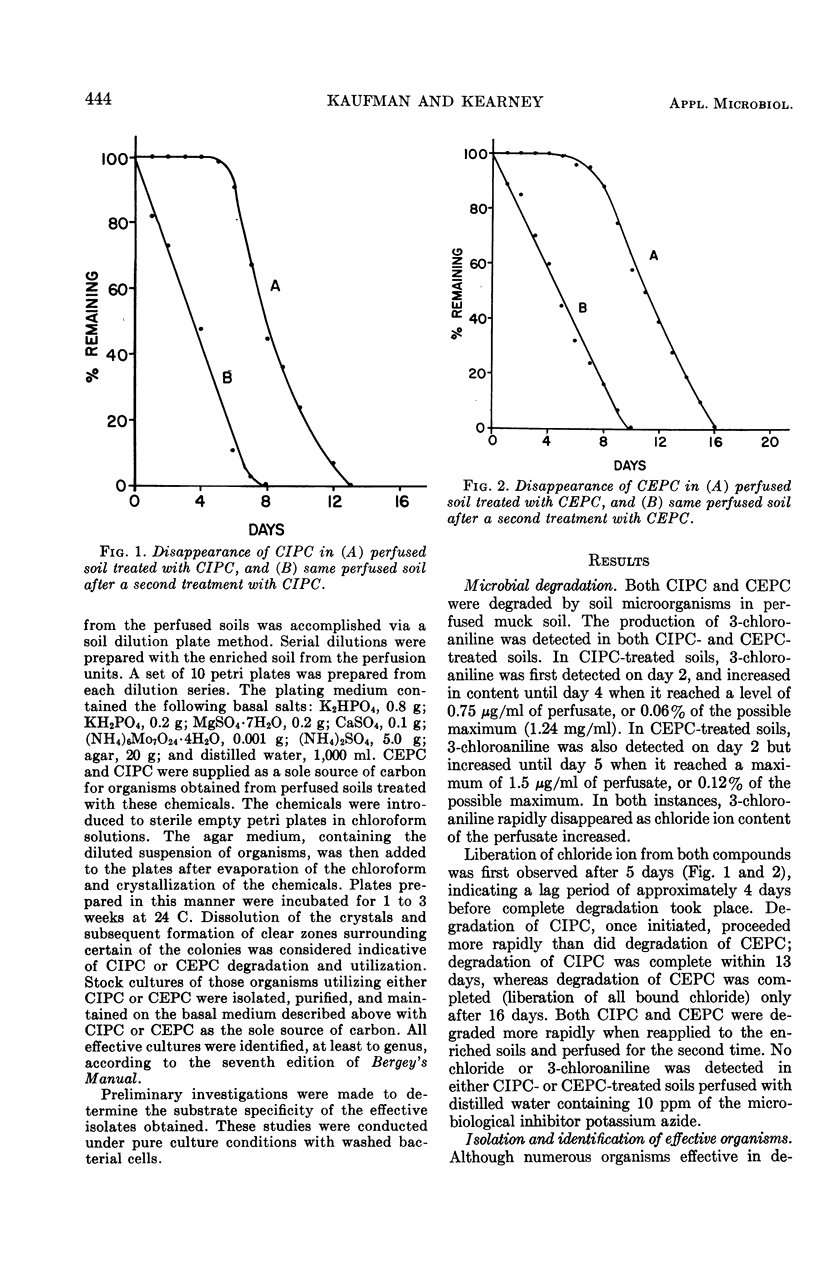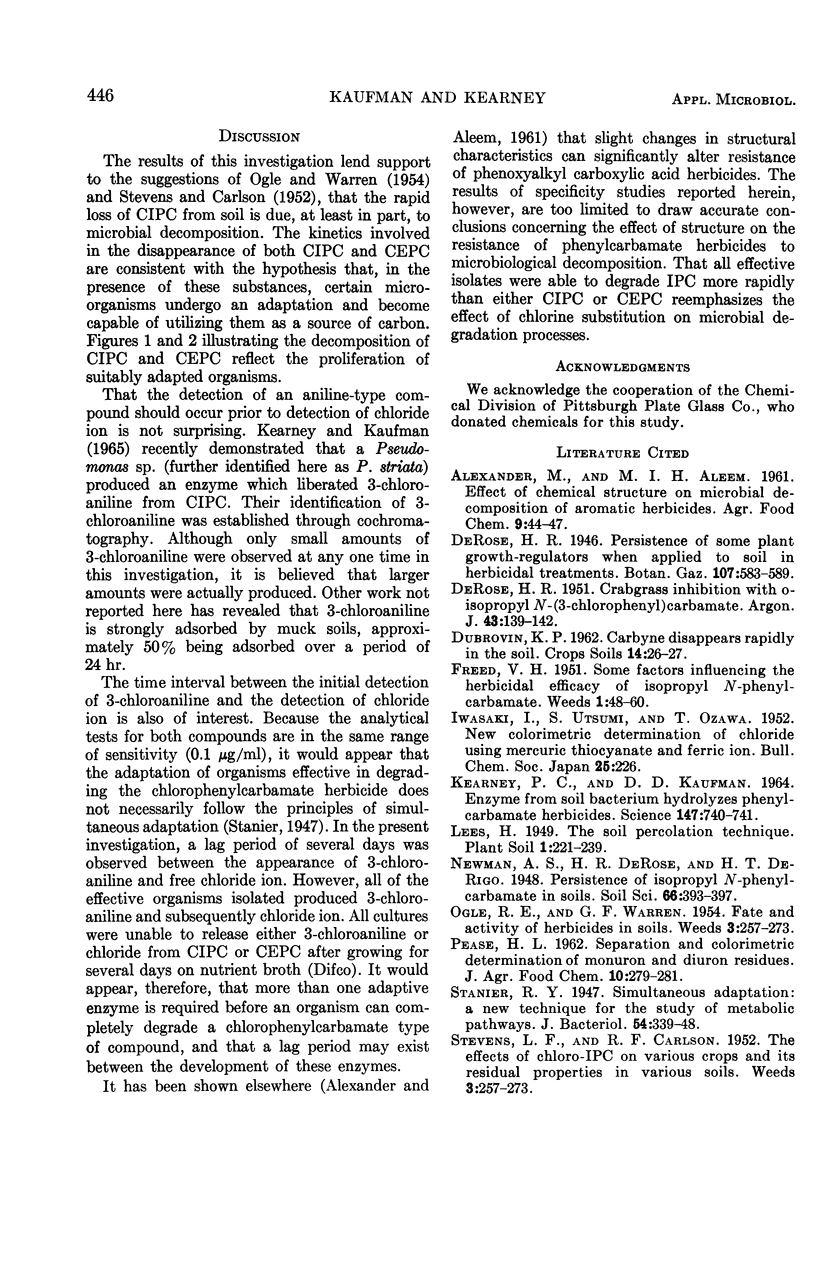Abstract
Microbial degradation of isopropyl-N-3-chlorophenylcarbamate (CIPC) and 2-chloroethyl-N-3-chlorophenylcarbamate (CEPC) was observed in a soil perfusion system. Degradation in perfused soils, and by pure cultures of effective bacterial isolates, was demonstrated by the production of 3-chloroaniline and the subsequent liberation of free chloride ion. Identified isolates effective in degrading and utilizing CIPC as a sole source of carbon included Pseudomonas striata Chester, a Flavobacterium sp., an Agrobacterium sp., and an Achromobacter sp. Identified isolates, effective in degrading and utilizing CEPC as a sole source of carbon, included an Achromobacter sp. and an Arthrobacter sp. CIPC-effective isolates degraded CEPC more slowly than CIPC, whereas CEPC-effective isolates degraded CIPC more rapidly than CEPC. Both CIPC- and CEPC-effective isolates degraded isopropyl N-phenylcarbamate (IPC) more rapidly than either CIPC or CEPC.
Full text
PDF



Images in this article
Selected References
These references are in PubMed. This may not be the complete list of references from this article.
- Kearney P. C., Kaufman D. D. Enzyme from Soil Bacterium Hydrolyzes Phenylcarbamate Herbicides. Science. 1965 Feb 12;147(3659):740–741. doi: 10.1126/science.147.3659.740. [DOI] [PubMed] [Google Scholar]
- Stanier R. Y. Simultaneous Adaptation: A New Technique for the Study of Metabolic Pathways. J Bacteriol. 1947 Sep;54(3):339–348. doi: 10.1128/jb.54.3.339-348.1947. [DOI] [PMC free article] [PubMed] [Google Scholar]



